
Section E New Testament
Chapter 37 - Western Wall of the Temple Mount
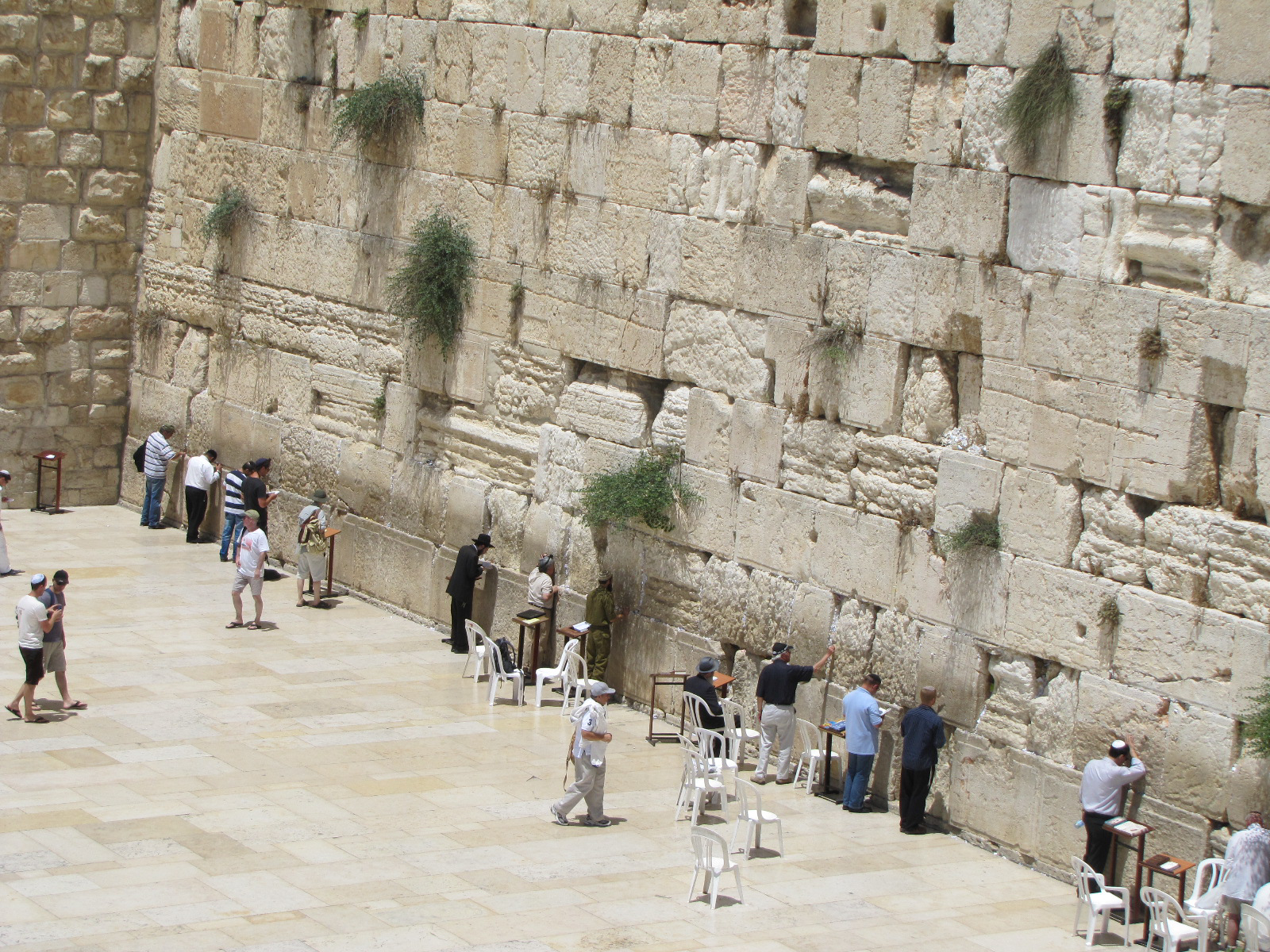
The Western Wall
The entire west side of the Temple Mount retaining wall can be called the western wall (1,600 feet), but there is a section of this wall that is commonly called the Western Wall. It is a 187 foot section of the wall with a large plaza area where the seven courses (or layers) of stones of the retaining wall of Herod's Temple Mount can still be seen.
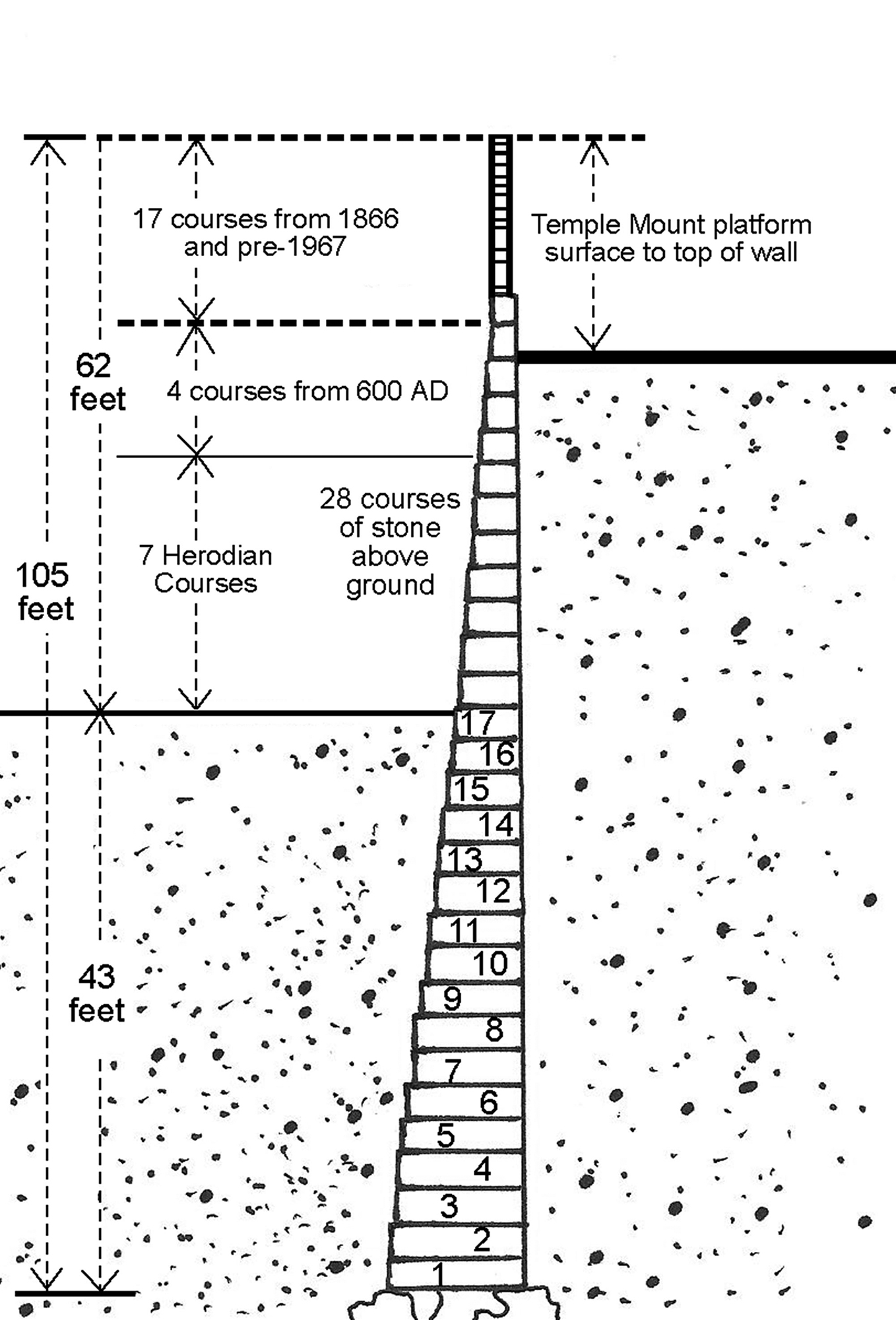
There are 17 courses of Herodian ashlars still buried at the Western Wall. The bottom course is 50 feet wide. Seven courses from Herod’s retaining wall are presently visible above ground. The 21 courses on top of those 7 Herodian courses are, from lowest to highest:
1. Four Courses added in the 600's by Umayyads.
2. Fourteen layers added in 1866 during the Ottoman period
3. Three courses added before 1967 by the Sunni Muslim cleric in charge of Jerusalem's Islamic holy places.
Some interesting facts about the Western Wall:
1. The wall consists of a total of 45 courses of stone with 17 still underground and 28 above ground.
2. The overall height of the wall from the foundation to the top is 105 feet.
3. 43 feet of the wall (17 courses) remains buried below the level of the plaza.
4. 62 feet of the wall is above ground.
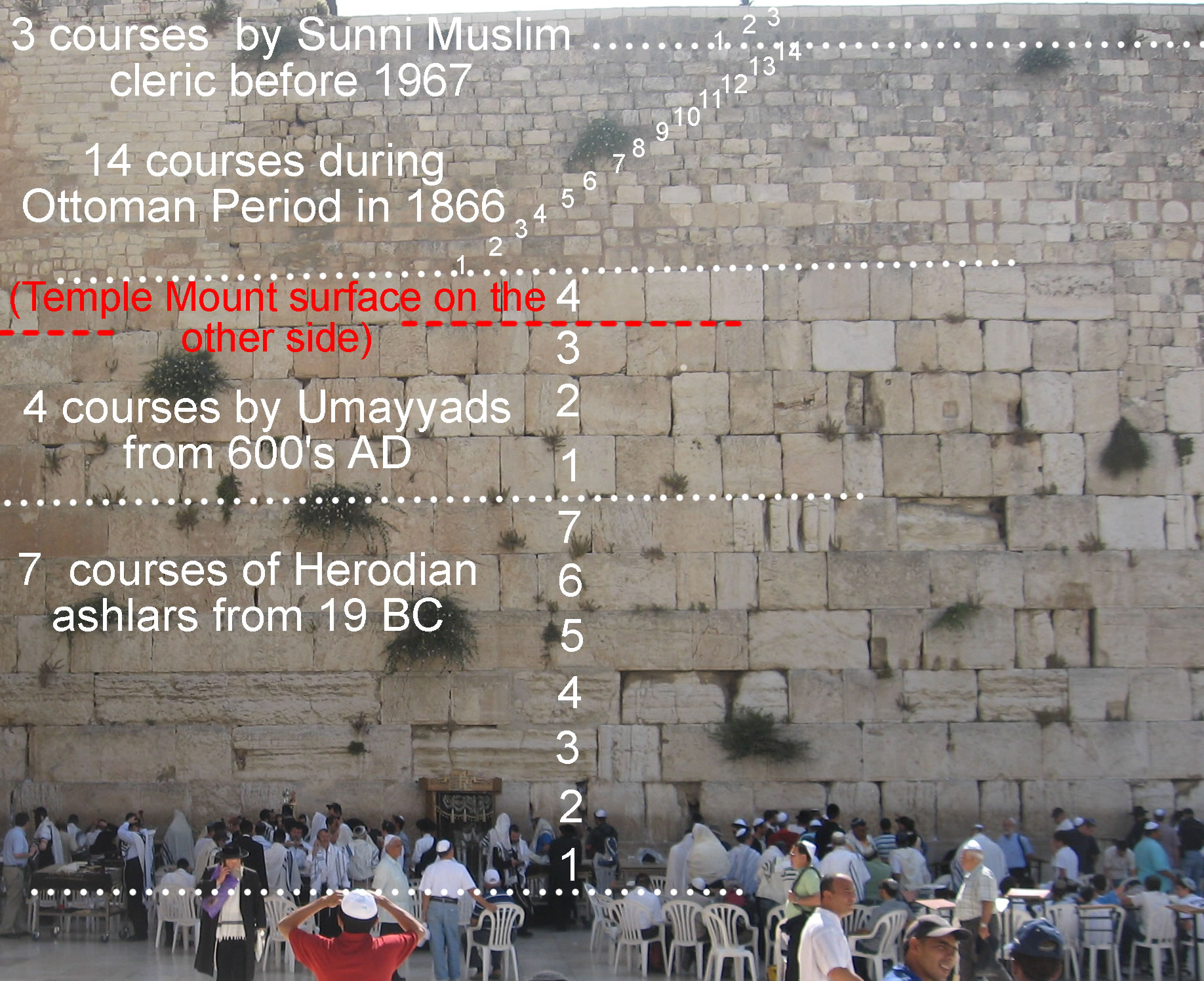
The Western Wall at the Western Wall Prayer Plaza. This is also known as the Kotel or "Wall". Kotel ha-Ma'aravi means "Western Wall."
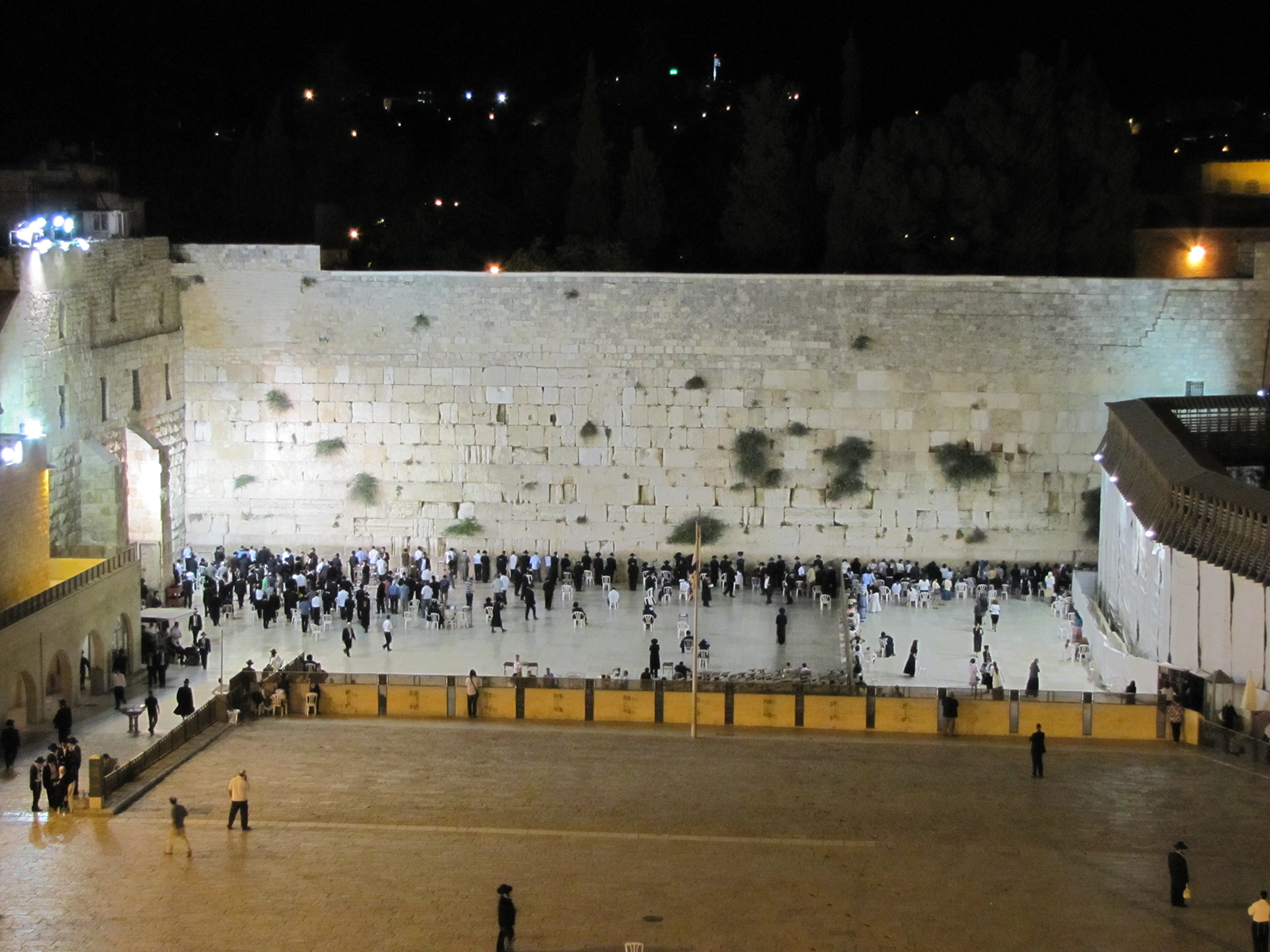
A typical midnight in June at the Western Wall Prayer Plaza. Wilson’s Arch is to the left and the ramp for non-Muslim entrance to the Temple Mount through the Morocco Gate is to the right. The men’s section is the larger portion to the left and the women’s prayer section can be seen to the right next to the ramp. There is a thin five foot wall called a mehitza separating the men’s and women’s sections.
Before the plaza was built in front of the Western Wall, there was nothing but a 12-foot-wide alley running along this area. It ran for about 92 feet. After the war of 1967 the Jews removed buildings and expanded the plaza. Excavation work has exposed much of this west wall of the temple mount to the south. An additional section called the Small Western Wall can also be seen in the Muslim Quarter.
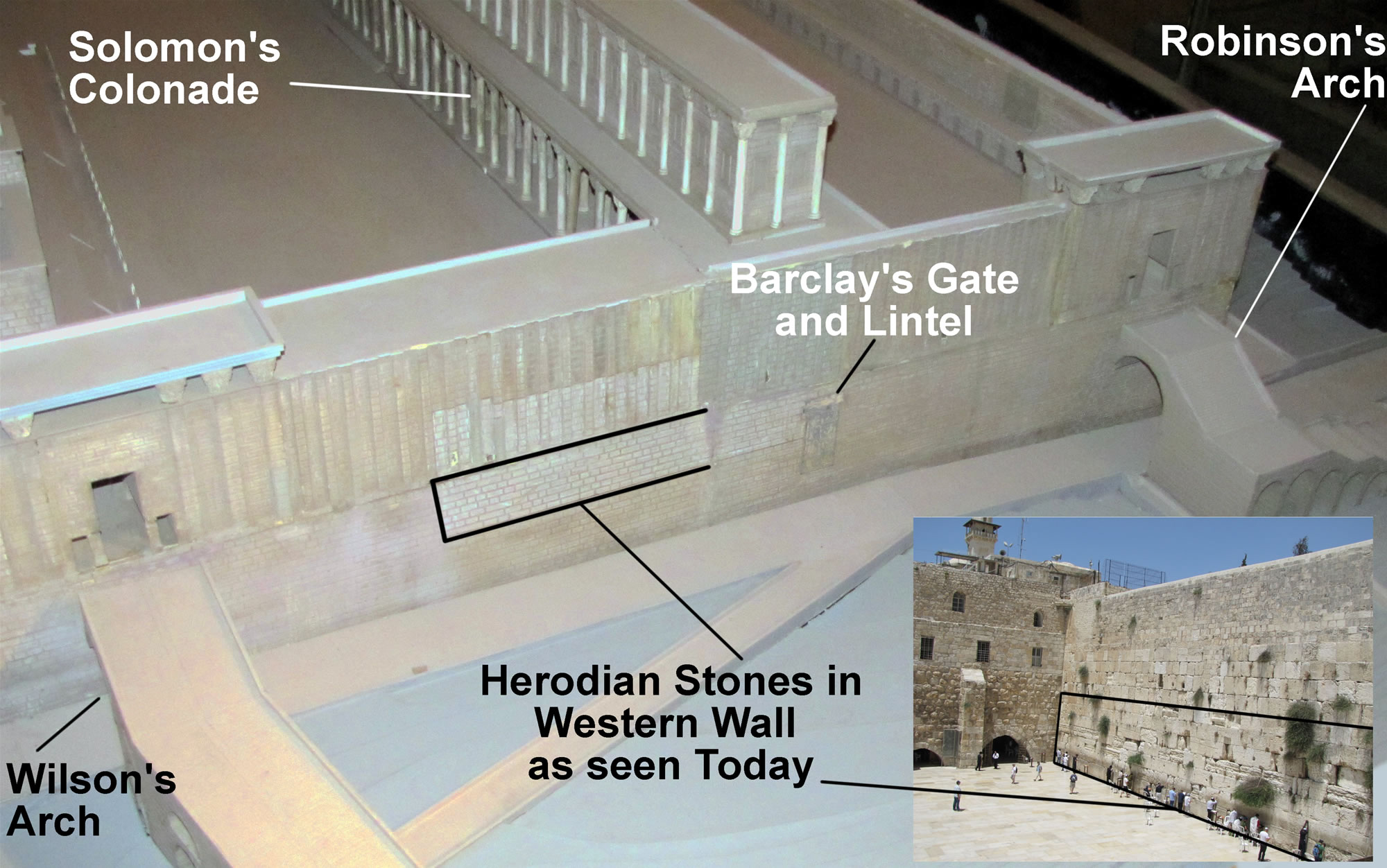
Compare the section of Herodian ashlars in the small photo from today with the same stones seen in the model of the 70 AD Temple Mount. Notice how high today’s pavement is and how much of the wall is still buried under rubble.
The Herodian stones in the Western Wall are limestone ashlars that were likely quarried from Solomon's Quarries (Zedekiah's Cave), located today under the Muslim Quarter in the Old City. The average stone weighs between two and eight tons and is about 15 feet wide. Each stone has finely chiseled borders cut around the edges a little more than 1/2 an inch deep and between 2-8 inches wide. In the northern section of the western wall, located in the tunnels cut along the base of the wall (below the surface to the left of this photo), one stone weighs 570 tons and is 44.6 feet long and almost 11 feet wide. This stone is called the Master Course.
Four entrances or gates to the ancient Temple Mount can still be identified and seen along the Western Wall:
1. Barclay’s Gate
2. Warren’s Gate
3. Wilson’s Arch
4. Robinson’s Arch
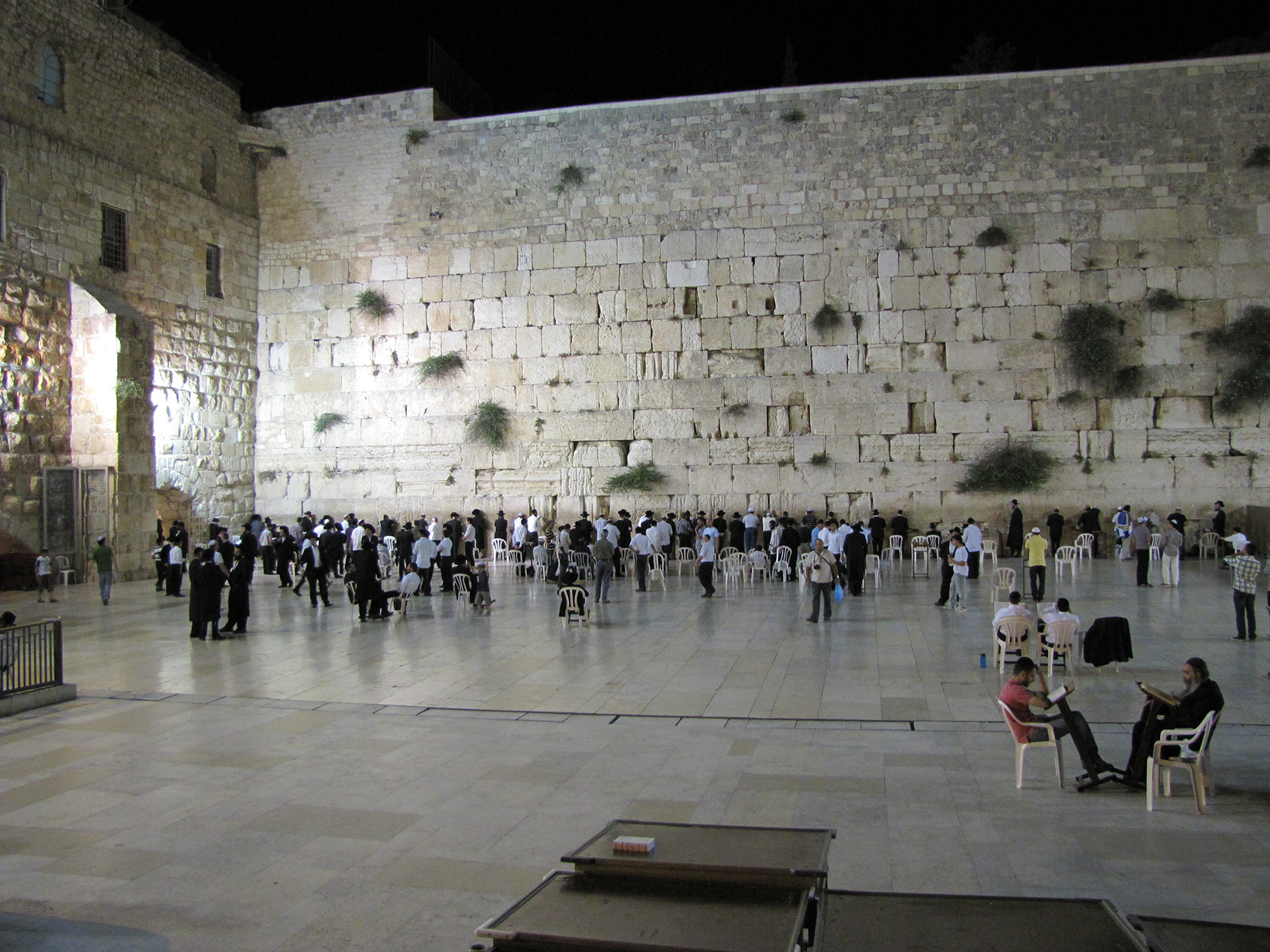
The men's section of the Western Wall Prayer Plaza.
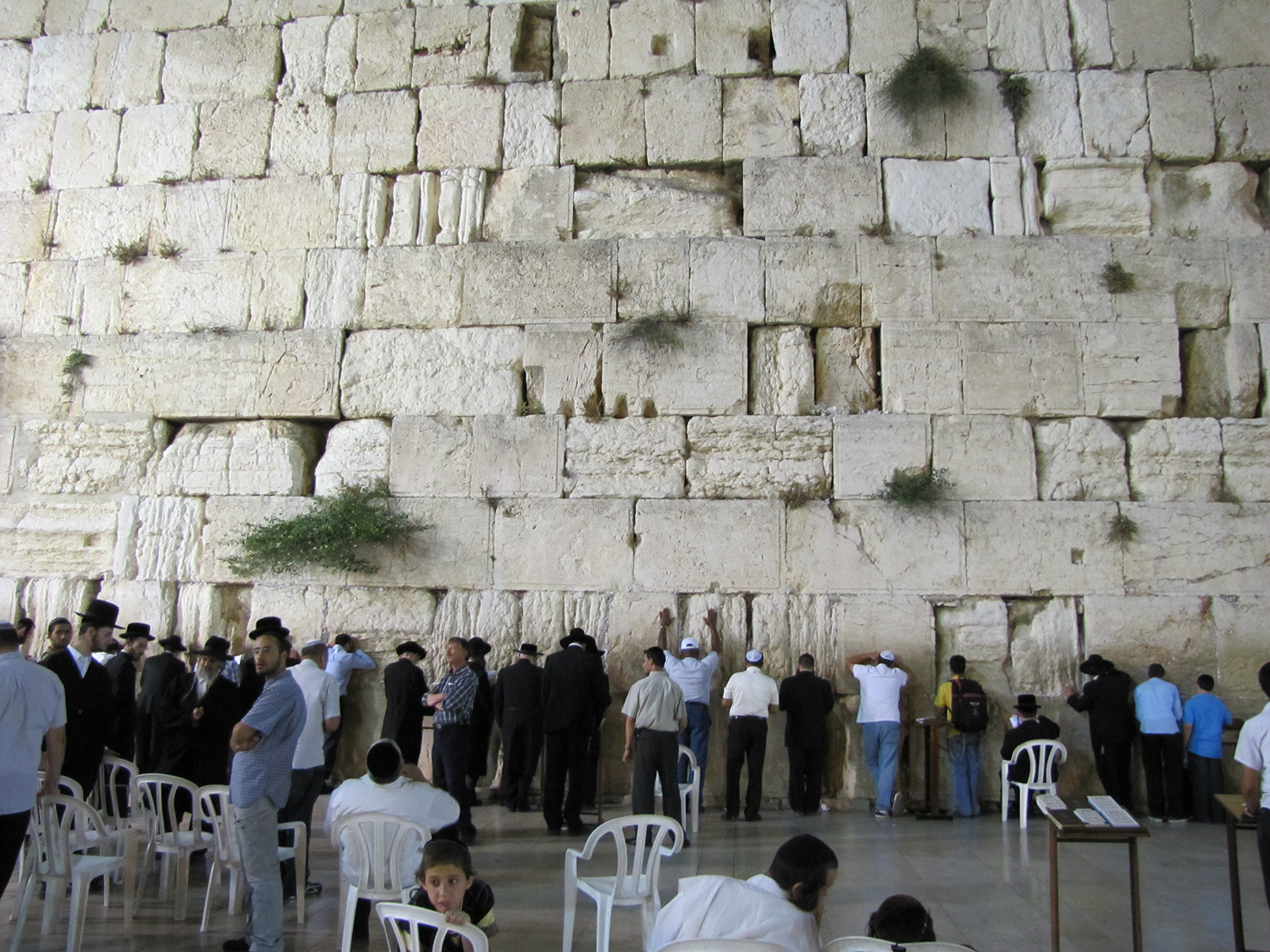
Jewish men praying at the Western Wall.
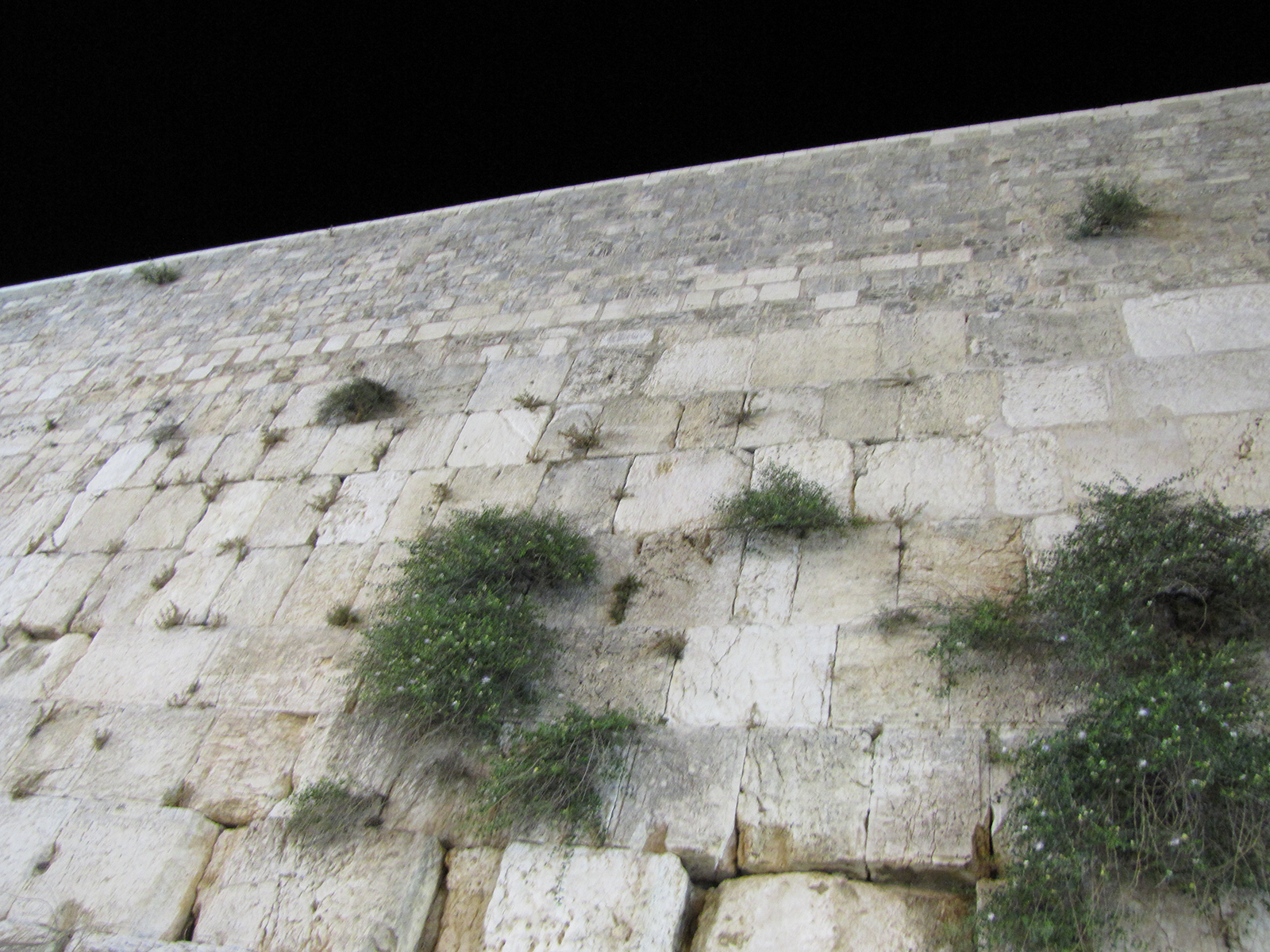
Looking up the Western Wall.
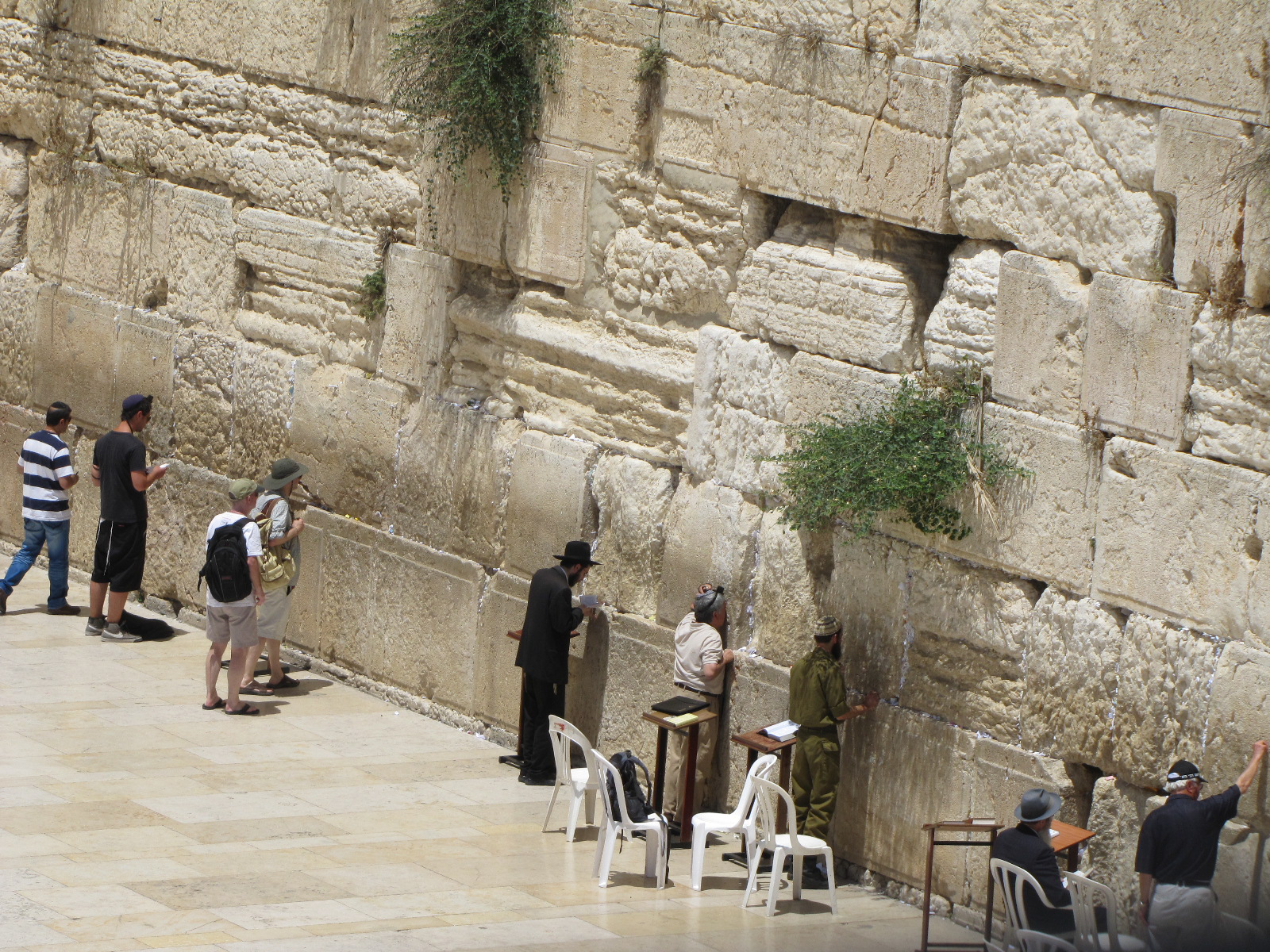
Notice the tourist, the orthodox Jews, a Jewish man, an Israeli soldier, and others at the wall.
All the stones in this photo are Herodian ashlars placed here by Herod’s workers.